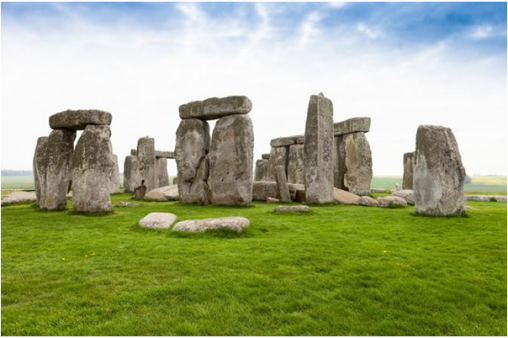
Stonehenge :
Stonehenge is not only a collection of ancient stones, depicting as it is believed now they are related to some ancient people’s burial ground. It is situated on the plains of Salisbury located in Wiltshire, 137km west of London. Scientists believe prehistoric remains of this monument date back approximately 5,000 years. Stones of these sites consist of upright large size, and they are placed in a circular pattern. The mysterious site is believed to have been part of a place of worship. The stones are placed precisely to align with the sunrise on the summer solstice. Scholars say that around 180 generations have passed since the stones were erected at Stonehenge. About 1,500 Roman objects have been found at Stonehenge, scholars claim.
Recently, Christophe Snoeck, University of Oxford, demonstrated that a cremated bone retains its strontium isotope composition which marks their place of origin to Praseli Mountains in Wales.
What is interesting in these monuments is that use of bluestones in these structures is noticed at their early stages. While name of Praseli refers to Baseli same as Baisali, the place of worship of the deity Baseli by the community of ancient mariners at the banks of the rivers or near the seashore, this structure remind us of ancient migration also. The bluestones’ were then available near Blue Mountains, or Nila-Giri. Stone idols of celestial bodies were made in ancient Ujjain, same as biblical Oz; this was a place on the bank of the river Indus. These structures are also observed in some isolated sites of ancient Ujjain, but scholars are not interested to relate these monuments as elsewhere done by scholars abroad.
Greek mythology identifies mysterious nature of stones at the centre of the earth like Pali and Indian puranas



 © All rights reserved, 2022, Akhil Kumar Sahoo. Design :
© All rights reserved, 2022, Akhil Kumar Sahoo. Design :